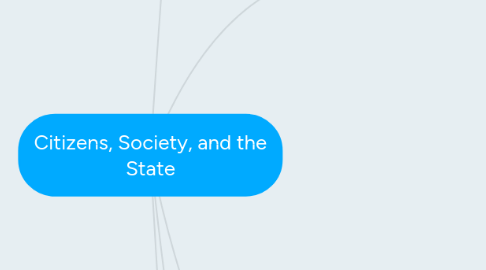
1. Cleavages
1.1. Nationality
1.1.1. Nationality it the most important cleavage
1.1.1.1. These cleavages determine the borders of Russia
1.1.2. Ethnic Groups
1.1.2.1. Russian: 79.8%
1.1.2.2. Tatar: 3.8%
1.1.2.3. Ukrainian: 2%
1.1.2.4. Bashkir: 1.2%
1.1.2.5. Chuvash: 1.1%
1.1.2.6. Other: 12.1%
1.1.3. Chechnya
1.1.3.1. A primarily Muslim region that has fought for years for freedom
1.1.3.2. Chechens engage in terrorist acttacks on Russia
1.1.3.2.1. 2004: seizure of school killing 350 people
1.1.3.2.2. 2009: suicide bomber attack against Ingushetia's president
1.1.3.2.3. Fighting still continues
1.1.3.3. Signed constitutions approved by Chechen voters
1.1.3.3.1. 2007: Ramzan Kadyrov became president
1.1.4. Nationalist Terrorism
1.1.4.1. 2006: bombing in Moscow market killing 10
1.1.4.2. 2010: xenophobic attacks killing 37
1.1.4.3. 2010: killing of Russian soccer fan, lead to riots close to Red Square
1.2. Religion
1.2.1. Tsarist Russia is overwhelmingly in line with the Orthodox Church
1.2.1.1. When Soviets came to power, they were non-religious
1.2.1.2. Over the 74 years the Commies were in charge, people lost faith in the church
1.2.1.3. In 2007, Yeltsin tried to reunite with the Russian Orthodox Chuch
1.2.1.3.1. By this point, so many people were so non-religious that it did not do much to bring people back
1.2.1.4. Because of Russia's diversity, there are still Jews, Muslims, and Protestants
1.3. Social Class
1.3.1. Communism attempted to destroy social classes
1.3.1.1. It was partially successful
1.3.1.2. Except,, government officials of the Communist party were very wealthy and still supported social and economic equality
1.3.2. While under Yeltsin, there were new socio-economic classes developing under Capitalism
1.3.2.1. When Putin came along in 2000, he reverts to socialist views by arresting some of Russia's richest Capitalists
1.3.2.2. He also reinstated major government regulations on some of Russia's biggest corporations
1.4. Rural/Urban Cleavages
1.4.1. Stalin led to increase in urban population
1.4.1.1. 73% of Russians living in cities
1.4.1.2. those in cities tend to be more educated and in touch with the western culture
2. Beliefs and Attitudes
2.1. Marxism
2.1.1. "predicted the demise of the capitalist West"
2.1.2. belief led to Russian nationalism
2.2. Stalinism
2.2.1. pragmatic internal development
2.2.2. "old tendencies toward absolutism and repression returned"
2.3. Mistrust of the Government
2.3.1. alienation
2.3.1.1. polls show citizens feel alienated from the political system
2.3.1.2. "alienation is also indicated by a low level of participation in interest groups"
2.3.1.3. however, Putin has a high level of approval
2.3.2. according to polls, people believe in a democratic system but do not trust the government to turn the ideals into reality
2.4. Statism
2.4.1. people "expect the state to take an active role in their lives"
2.5. Economic Beliefs
2.5.1. Yeltsin had to choose between slow economic growth and rapid economic growth (which limited government regulation and Capitalism)
2.5.1.1. he chose rapid
2.5.1.2. rapid growth led to a declination of the economic system
2.6. Westernization
2.6.1. Slavophile vs. Westernizer
2.6.1.1. "some parties emphasize nationalism and the defense of Russian interests and Slavic culture"
2.6.1.2. "these parties also tend to favor a strong military and protection from foreign economic influence"
2.6.1.3. reform parties also support integration of Russia into world economy and global trade
3. Political Participation
3.1. Voting Percentage
3.1.1. voting percentage was nearly 100% during Soviet rule
3.1.2. elections were not competitive until Gorbachev created them during the Soviet Union
3.2. Voting Protests
3.2.1. a series of protests were organized after the economic crisis in 2008
3.2.2. the largest protest contained 1000 marchers in Vladivostok and was not interfered with by police action
3.2.3. these marchers wished for the Soviet Union's centralized economic policies to come back
3.2.4. no protests turned violent
3.3. Duma Elections
3.3.1. voter percent of 50.3% in 1993
3.3.2. Duma failed to take over the country
3.3.3. voter percentage of 56% in 2003
3.3.4. voter percentage of 64% in 2007
3.4. Presidential Elections
3.4.1. voter percentage 1991: 75%
3.4.2. voter percentage 2004: less than 65%
3.4.3. voter percentage 2008: 70%
4. Russian Youth Groups
4.1. Putin created youth movements, all of which are used to create a loyal group of youths and to lower resistance rates
4.1.1. Nashi
4.1.2. Youth Guard
4.1.3. Locals
4.2. Nashi
4.2.1. a democratic, anti-fascist, anti-'oligarchic-capitalist' movement.
4.2.2. emerged during the 2008 elections
4.2.3. organized mass Pro-Putin marches
4.2.4. "receives grants from the government and larger state-run businesses"
4.3. Comparing to UK
4.3.1. Russia youth movements: Communist
4.3.2. British youth movements: Facist
4.3.3. Russia: a handful, well-known, created by Putin
4.3.4. British: few, well-known, created by individuals mainly
5. Civil Society
5.1. Civil Society
5.1.1. "private organizations and associations outside of politics"
5.1.1.1. Most Russians do not attend a church regularly
5.1.1.2. Most do not belong to recreational clubs or groups
5.1.1.3. About 1% report belonging to a political group
5.1.2. low civil society
5.1.3. however, many claim to regularly discuss and pay attention to politics
5.2. State Corpotatist
5.2.1. state-sponsored organizations formed by the belief that only the party can represent the people's interests
5.2.2. civil society began to emerge with glasnost
5.2.2.1. many groups have formed since
5.2.2.1.1. these groups have strict restrictions
5.2.2.1.2. government has tried to weaken these groups instead of ending them

